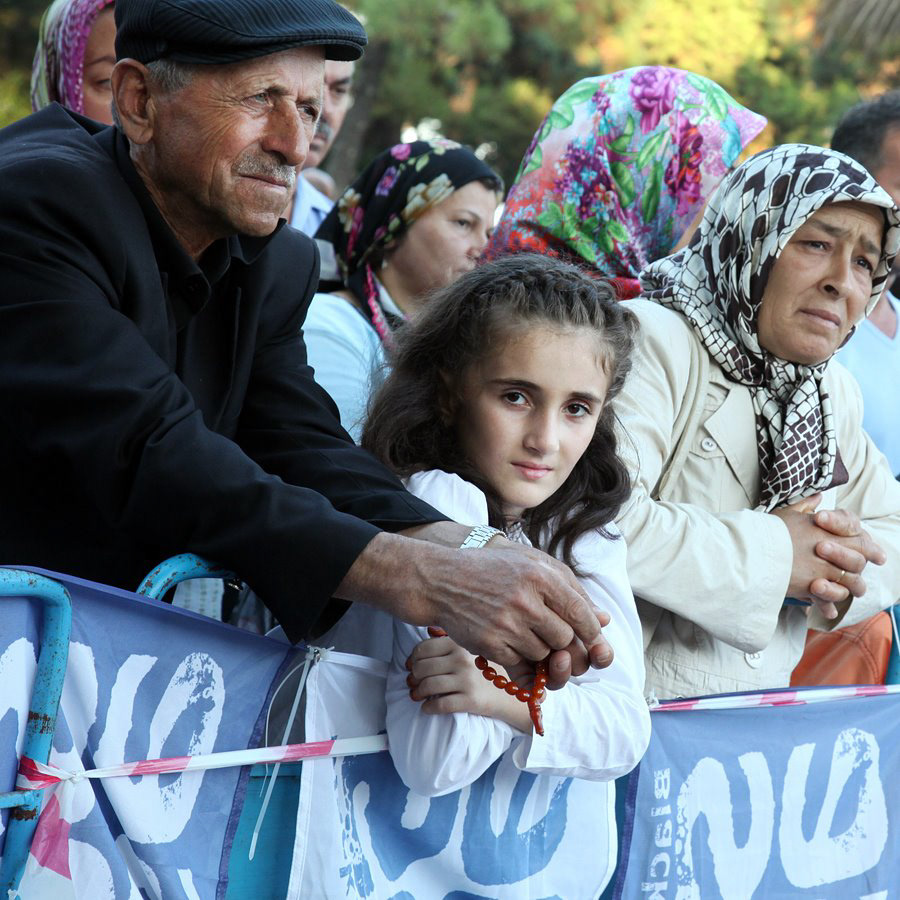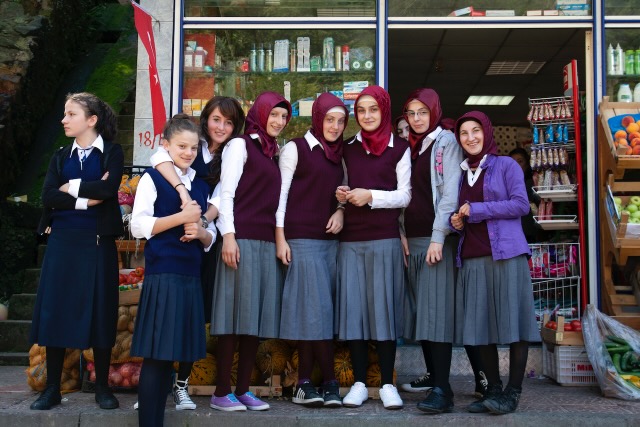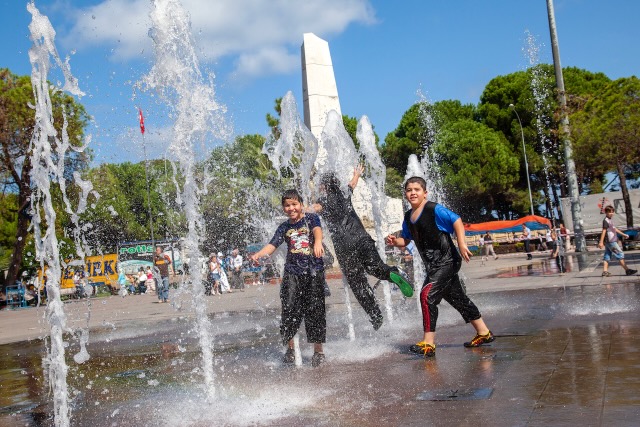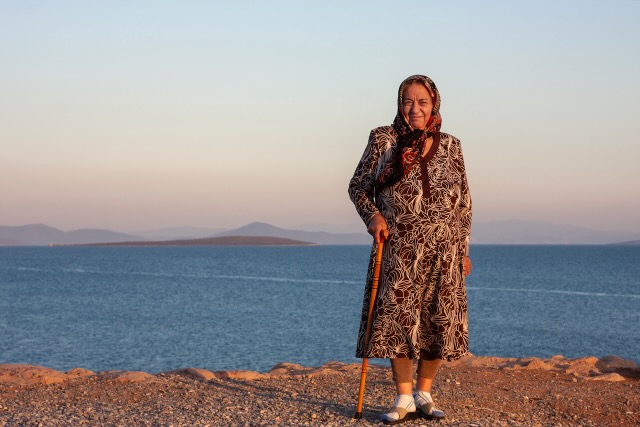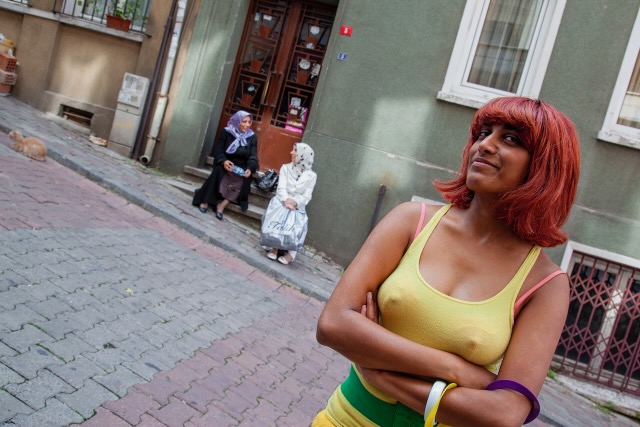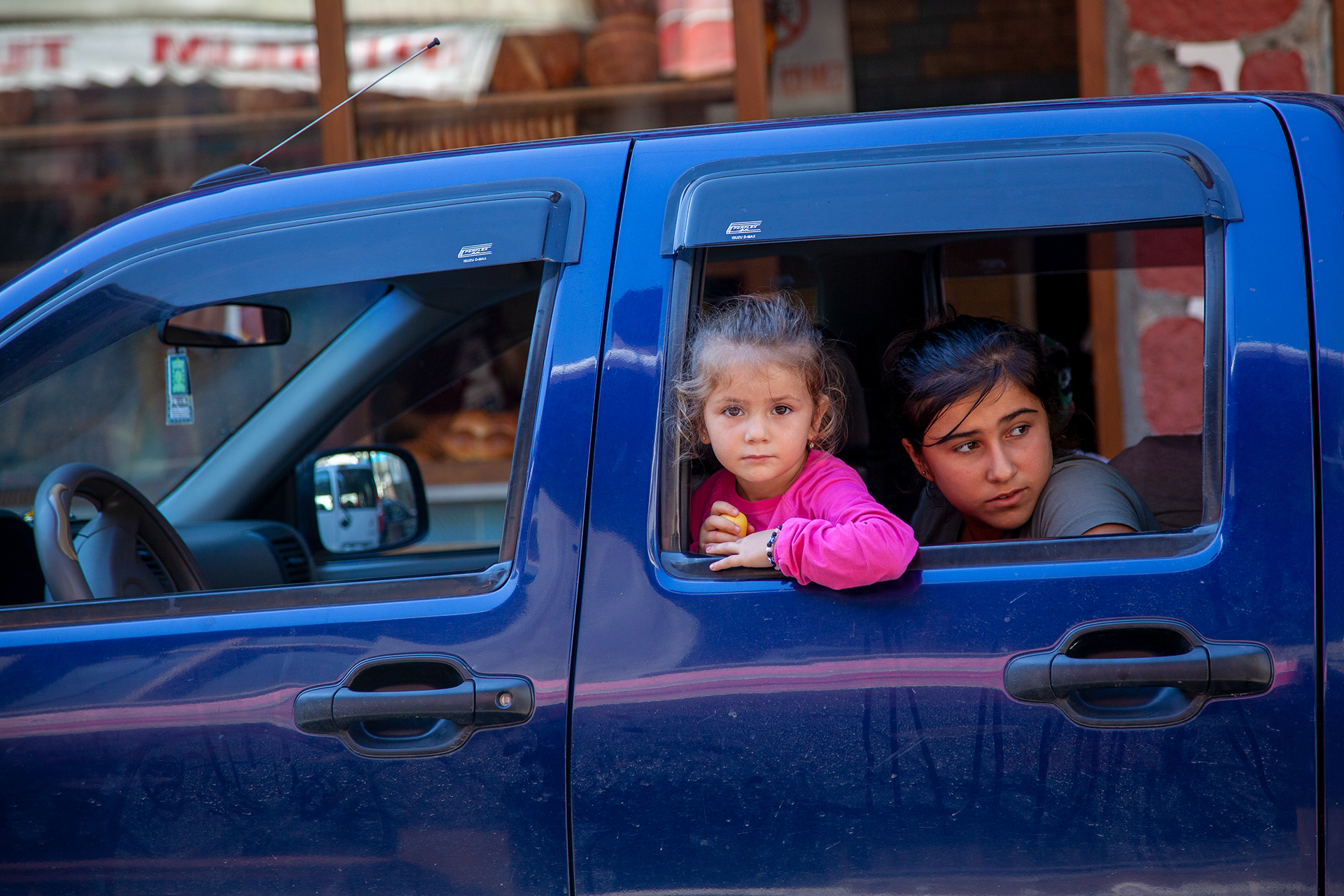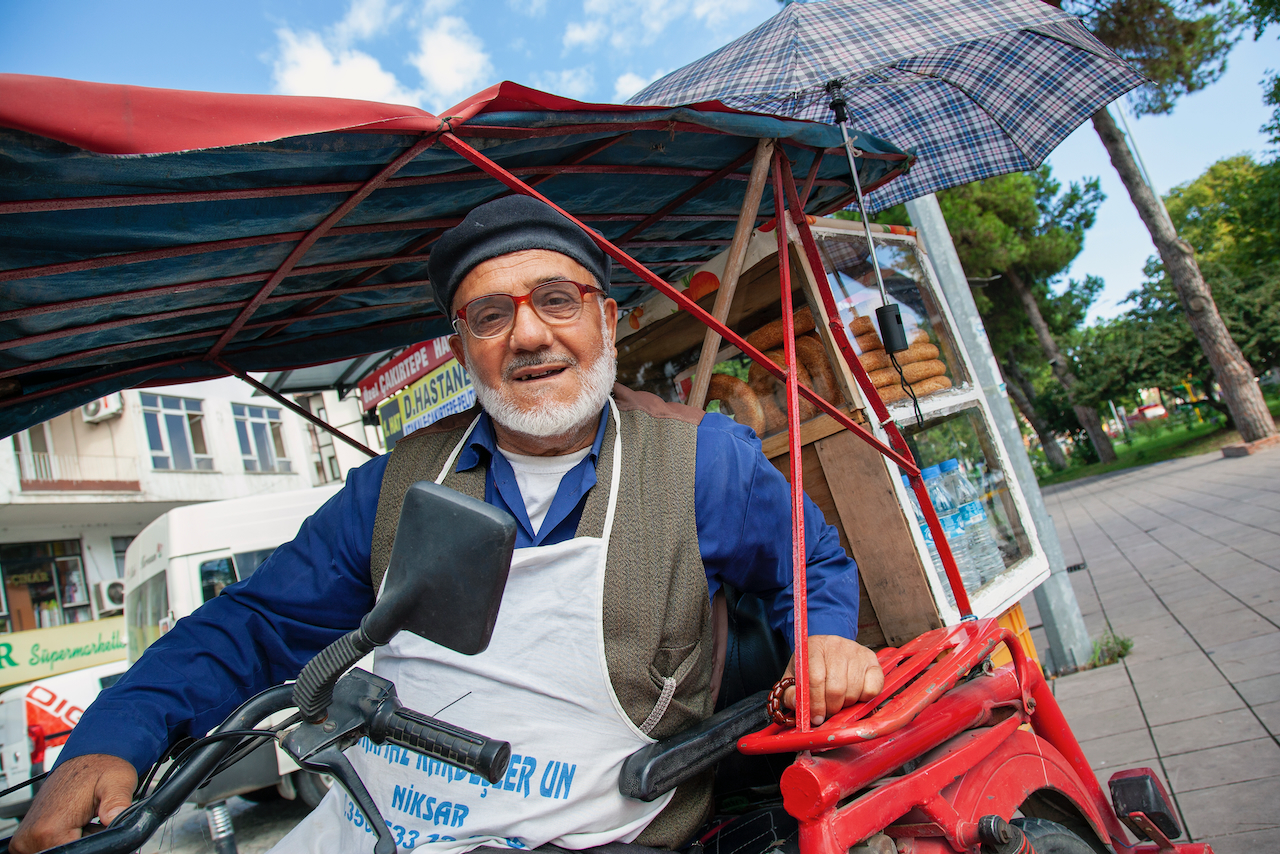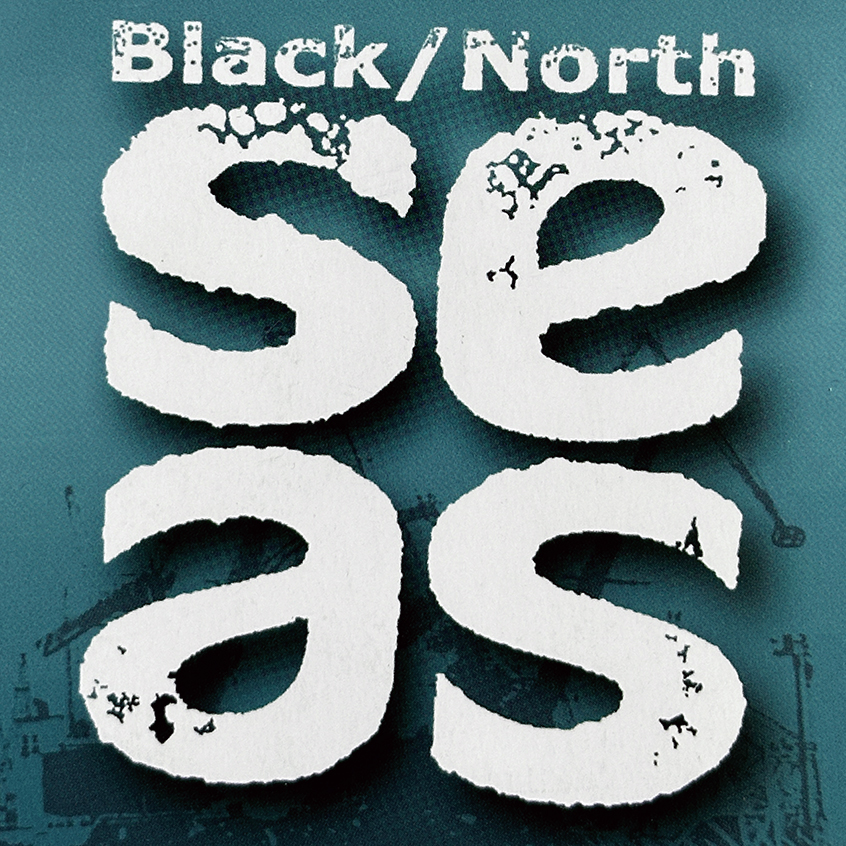SEAS X
Location: Turkey & Georgia Date: 2010
SEAS X . . .
Black/North SEAS is an arts adventure that reveals in story, song and image a vision of Europe drawn from the experiences of the communities that live on its shoreline. 10 different countries from the Black and North Sea regions of Europe are taking part, with Skegness being chosen as the only UK host.
The project launched in Odessa, Ukraine in May 2008 and concludes in Skegness. The SEAS Project brings together artists, politicians and community groups to focus on the challenges faced by people living in the region's coastal towns and cities.
SEAS Project in Skegness
SEAS was initiated by Swedish arts organisation Intercult. Arts Council England have supported East Lindsey District Council to participate in this project.
As well as the international artists attending the festival, there are a wide range of local artists including John Byford who will be taking part and showcasing his work at the Embassy Theatre with his 'daily dose' exhibition.
SEAS X - Photo and documentation: Turkey / Georgia
John Byford (photographer, UK) turns his lens towards people and their experiences. He joined SEAS in Turkey and Georgia. A collaboration with Arts Council England/East Midlands.
And we’re off!
First Stop: Istanbul
Artists and tech staff have been dropping in to Istanbul from all over Europe yesterday and a few of them today. Believe it or not everyone arrived on time and are on board. But Istanbul seems to have its own tempo on a Wednesday late afternoon. First the group had to wait an hour for a delivery from the airport (boxes of technical equipment) that were stuck in traffic, then there was more waiting for our SEAS Xpedition coordinator Selen and the mini bus who were stuck in traffic. Right now a bus with 31 people and a following mini bus with 2 people and lots of equipment are in the outer edges of Istanbul and, guess what, they are stuck in traffic!
The atmosphere on board is quiet expectation. Small meetings are going on and Selen is apparently creating a Facebook-event in Turkish. The bus is well connected.
Akçakoça. Closest to Istanbul, this village seems to take on life in a slower tempo which makes the highly modern mosque in the village center an unexpected glimpse into the future.
We managed the first day, the first station Akçakoça, with curiosity and wonder.
We started early by flagging, bannering and roping in territory at the meydan (town square) which we made our own. Cristina set up her printer and computer in the teahouse. The first little girl she met became her close companion and took 388 photos in less than an hour. She saw her town for the first time through a lens and got hooked. Cristina went on to produce fantasy images of the children’s self-portraits, as football players, champions, superheroes and crimefighters. The children carried these photos home with them.
Nedyalko took over a table with his collection of postcards, medals and photos from the Bulgarian communist era. As he created small “memory boxes”, he found himself surrounded by groups of men who offered their stories, showed photographs of their families and admired his handcraft.
The Fantomats had their usual effect on the local people, attracting attention all day long. In fact, a new way of greeting each other established itself among local men and boys: you walk up to a friend, press your finger against the top of his head and look deep into his eyes. Like the little movies in the eyes of the Fantomats, people begin looking for those stories in each other.
Later in the day both BADco (Zagreb) and Vilna Scena (Kiev) animated the square with performance actions, radically different gifts but generously received by the townspeople.
So as the sun set and fishing boats began to leave the harbour and the call to prayer spread its soothing sound, the little amphitheatre filled with men, children – and for the first time all day – women. They had come to watch WAITING by Tiyatro Oyunevi. The vice mayor of the town greeted us, thanked us for coming and the show began, a quiet and concentrated work about being strangers in a strange land. At the end: a long applause and standing ovation. As we were packing up, these kids in photo shouted ‘we love you’
This said it all for me on just how well we have be have been treated and on how well the performances have gone down here in Akçakoça.
Ünye. Our second station, Ünye, went beyond our expectations and finished with wild dancing on the central square, together with the young people and children of this lively town. The largest town during the trip, this thriving coastal town is working to integrate the sea and beach into their future of cultural tourism.
We arrived late on Friday evening only to discover that some of our pre-booked hotel rooms had already been given away, leaving a few of us in small windowless rooms. Everyone took it in stride and we went straight to dinner, again by the sea.
Selen, our SEAS X Turkey coordinator, had invited a friend to make a presentation on the history of Ünye. He told us of the personal tragedies that took place nearly ninety years ago, when deportation of the Armenian and Greek populations led to the nearly total ethnic cleansing of the town. Once a rich and diverse region, today remain only a few families of Armenian descent and no Greeks at all. Our guest lecturer’s grandmother was left behind by her family at the age of 5, with the promise that they would soon come back to get her. They never returned. She grew up, married and died in Ünye.
Ayder. We arrived Sunday evening in the little village of Ayder, high up in the mountains that run down to the Black Sea. A tiny paradise, dominated by the Laz and Hemsin minorities, now a tourist village during part of every year: trekking, skiing, rafting.
Many of the SEAS artists went immediately to the thermal bath, water temperature 45°; others went for walks. Surrounded by forests and waterfalls, we gathered after dinner to share our own artistic work. Presentations by the three UK artists (Verity-Jane Keefe, Priya Mistry, Rita Marcalao), by Scottish Chris Biddlecombe and Swedish choreographer Kajsa Sandström brought us closer together. We were also joined by Sukran Üst, director of the women’s arts festival FEMIN&ART which takes place in Trabzon each year. She told us of the struggle to empower women artists, strengthened by developing international contacts.
Camlihemsin. We woke up to a beautiful morning and took our bus down the mountain from Ayder to the village Çamlihemsin, a small village in the hills that maintains its roots of the Hemsin-people and has a greatly expanded summer population of Turks with country homes in the hills. Weset up in the small town square by the river. A short stop – three hours, many wonderful encounters. The FANTOMATS were popular, one of them standing in front of the bakery. The baker/owner adopted ”his” Fantomat, placed a stool in front of it so that the children could see into the eyes of the android sculpture and spent the morning explaining to everyone who came to buy bread how the machine works.
It was a different kind of stop from the others. We spent the morning, as visitors and strangers. But we felt oddly connected to the village by the time we finished our lunch and headed for Hopa.
Hopa. This border town is the regular stop of many trucks moving between Turkey and Georgia, the Caucasus and further to Iran and is our last stop in Turkey. Our hosts: the cultural-ecological organisation Birjasam. A gathering of experienced, young activists in a troubled community. A border town, Hopa is divided between those who control the customs business, import/export/transport and the citizens trying to design a town for their children and a future. We were asked to pay a bribe to the local authorities, through the vice mayor and of course refused. With the support of the regional government and our committed group of friends from Birjasam, we managed an amazing day together with the townsfolk, probably the best event ever.
Batumi. We are in Batumi, a Georgian City only a few kilometres from the Turkish border but very different from the variety of communities we have visited in the last 8 days along the Turkish Black Sea coast.
It has been a fascinating and challenging set of experiences. At the same time taking on board the work of the other artists that have been touring on this journey and the response and interaction of the people and towns and the meeting between us two.
We have started to develop towards a collaborative methodology that takes into account my more playful, action based experiments with Chris’ more research led construction processes. It was good to genuinely share our two approaches within the framework of the journey – opening up to unexpected occurrences and meeting the other artists and audiences.
This journey will stay with us and act as a springboard effecting the questions, ideas and purpose for our future project.
Words: Chris Torch. Photos: John Byford
